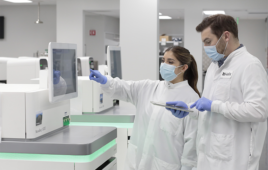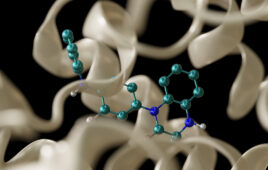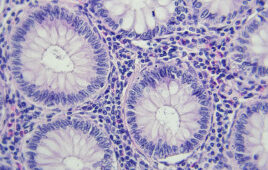A team of Penn State researchers conducted a genome-wide study to compare the relative importance of factors that contribute to DNA mutations, which are implicated in cancer and more than 40 neurological disorders. Led by assistant professor of biology Kateryna Makova, the group investigated the simultaneous effects of numerous factors that are thought to increase the susceptibility to mutations of microsatellites—variable-length sequences of recurring DNA subunits. Microsatellites are common throughout the genomes of plants and animals. The work is described in the January issue of Genome Research.
Results of the team’s analysis could have several applications. “Our statistical analysis may be useful in predicting which disease-causing microsatellites are likely to have high rates of de novo mutations,” said Makova. De novo mutations are those that occur for the first time in a family.
In addition to being of value to medical geneticists, Makova said the results may be useful to forensics experts and conservation geneticists. Because microsatellites are highly variable among individuals in healthy populations, they can be used by forensics experts to identify criminals. Similarly, conservation geneticists can use a lack of microsatellite variability among individuals in a group to distinguish populations that are threatened with low genetic diversity. By identifying the most important factors contributing to microsatellite mutability — the microsatellite’s ability to mutate — the team’s research may help scientists to pinpoint microsatellites that are particularly important for their area of research.
“There have been reports indicating that individual factors might be affecting microsatellite mutability, but nobody has looked at how these factors interact with each other and which factors are more important,” said Makova. “This is the first study to bring together multiple factors affecting microsatellite evolution.”
Release date: January 28, 2008
Source: Penn State
Filed Under: Genomics/Proteomics




